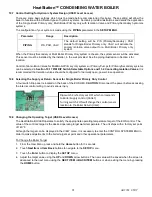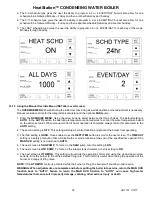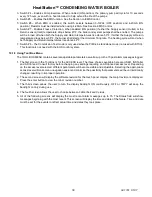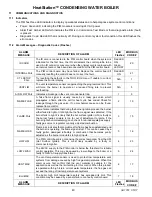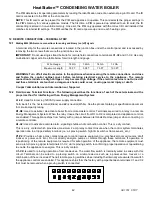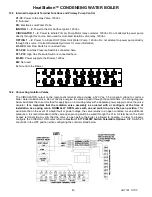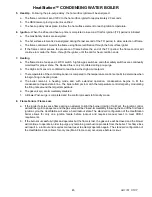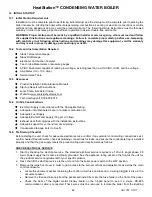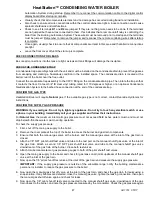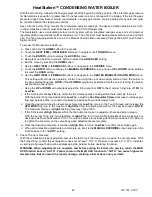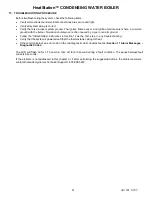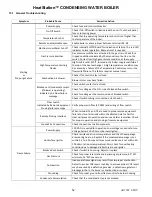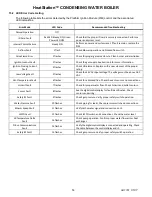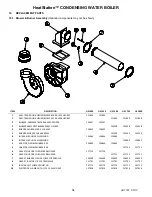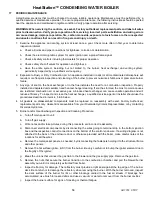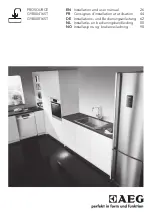
HeatStation™ CONDENSING WATER BOILER
44
34-1161 05/17
13
SEQUENCE OF OPERATION
1. Incoming 120VAC
a. Full time power to the Main Control Switch.
2. Power On
-
When the main control switch is turned on power is applied to the fuse then:
a. 120V is applied to the step-down transformer (24V), L.W.C.O, J12-6, J14-3, J14-5, L1 terminals and the
control switch lamp.
b. Both 24V and 120V is applied to the Platform Ignition Module (PIM). The circulator, blower and HSI circuits
are 120V.
c. The PIM performs a processor and memory self-test to insure proper operation. The PIM confirms the
presence of a valid ID card which matches the configuration previously stored in memory. If the valid ID card
is not present, the PIM generates a diagnostic fault. The non-volatile memory is checked for an active lockout
condition. A lockout indicates the previous attempt to light was unsuccessful, or a hi-limit or other system fault
occurred. The PIM stays in lockout until a manual reset is performed.
d. The PIM powers the BTCII display.
3. Control Device Pre-check
–
The following control circuits are checked for closure before the control system will
initiate a Call for Heat.
a. The PIM continuously monitors the flame status to verify no flame is present during Standby. If an erroneous
flame is detected, the PIM generates a flame error fault.
b. The Electronic Low Water Cut-Off control is a self-contained electronic device which senses the presence of
water at the boiler supply manifold. When the presence of water is confirmed, the contacts close on the
ELWCO and is sensed by PIM control.
c. The High Temperature Limit is combined in a common probe body with the supply sensor, located in the
upper header. The PIM compares the high limit temperature with the supply sensor temperature. If the two
temperatures are not the same, a sensor failure will result.
d. When the High Temperature Limit operation has been verified by comparison, the limit temperature will then
be confirmed to be under the maximum allowable temperature.
e. The Flow Switch is made up and continuously monitored to ensure sufficient water flow through the boiler.
Insufficient flow will overheat the boiler. If flow is not sufficient, call for heat will be prevented or interrupted
and an error will result. Flow switch is terminals H1 & H2. The Flow Switch is in line with the interlock remote
proving terminals C1 & C2. H1 from the flow switch feeds C2.
4. Call For Heat -
If the operating control senses that the temperature at the applicable operating sensor is below
the boiler set point by more than the differential and the previous control interlocks and safeties are satisfied, the
following sequence will begin:
a. The High Gas Pressure and Low Gas Pressure Switch are proved.
b. When the blower is energized the PIM uses a feedback loop to confirm blower speed.
c. Terminals P1-P2 are closed to activate any connected remote devices.
d. The circuit between Terminals C1-C2 is closed by any connected remote proving switches, enabling the boiler
to continue the sequence of operation.
e. After all proving all proving circuits and blower operation are verified, the BLOWER PRE-PURGE will starts
counting.
f.
During pre-purge the blocked flue switch senses that the vent and condensate trap are not blocked.
g. The ignition pre-purge delay takes place.
h. The voltage level of the 24 VAC supply input is confirmed to be above 18.0 VAC.
i.
The Ignition cycle begins.


